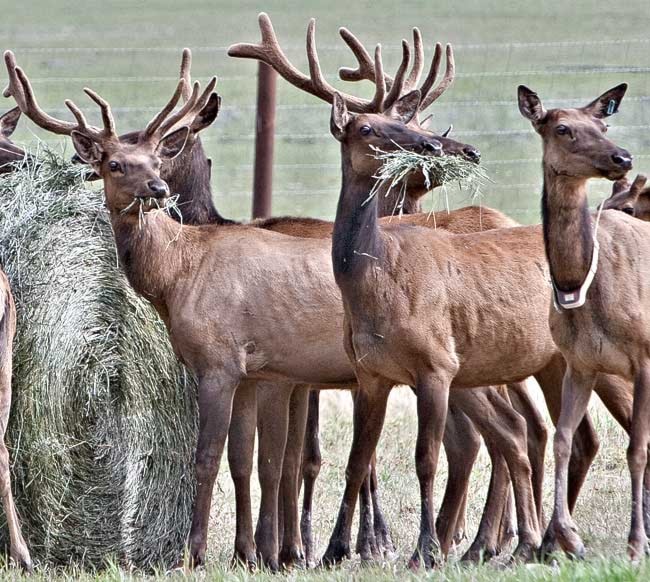It must rank as one of the longest run-ups to a hunting season.
Almost 60 years after being artificially introduced to the southwest corner of the Yukon, the government has lifted its hunting ban on elk in the Braeburn and Takhini areas because of increased herd numbers.
There are too many elk and they’re moving out of the triangular area of land hemmed in by Carmacks, Whitehorse and Haines Junction where they were intended to stay.
It’s good news for hunters, but not necessarily for straying elk.
“This is the first formal hunt after a significant number of years,” said territorial biologist Rob Florkiewicz.
In 1951, the territorial government, after being successfully lobbied by the Yukon Fish and Game Association, brought in elk from Elk Island, Alberta, with the express purpose of hunting them.
But the elk population didn’t grow, so harvesting them wasn’t a consideration.
Half a century later, you could say it’s thanks to the ticks that hunting season is now afoot.
In 2008, the territorial government launched a $300,000 program to stop the spread of ticks.
By capturing elk and their calves and keeping them in pens, the hope was that the tick infestation would be controlled.
But it also meant that elk calves weren’t at risk of predation and more calves survived.
Last year 50 calves were added to the elk population.
As the number of elk grew, they pushed out into the “buffer zones” surrounding Braeburn and Takhini, said Florkiewicz.
And this is where they began to end up being a problem in terms of vehicle collisions and overtaking agricultural spaces.
“People were relatively uncomfortable seeing these elk dispersed in areas where they weren’t traditionally,” said territorial biologist, Rick Ward.
“There were also concerns with the displacement of other wildlife, and parasites,”
Hunters with both a permit and seal will be chosen through a lottery to harvest elk in the buffer and core areas of Takhini and Braeburn.
Four hunting permits will be given out in Braeburn where elk numbers hover between 50 and 85. In the core area only one cow and bull each can be harvested.
Thirty-six permits will be doled out in the Takhini area, where herd numbers are approximately 175.
And it’s open hunting in areas outside of Takhini and Braeburn so long as hunters have a Wildlife Act permit.
First Nations will have 20 per cent of the hunting seals reserved for them. Just how these seals will be doled out is still in the works, said Ward.
“We have modest harvest in the core ranges where we’re hoping to support elk and we have an intense harvest zone where we have management issues,” he said.
“We feel confident the structure we’ve proposed is really going to be able to manage the risks we see coming.”
Hunting of elk in the buffer areas and outside of the Braeburn and Takhini ranges lasts from September 1 to March 31. The longer hunting season is a way to manage the herd numbers, said Florkiewicz.
Confronted by the question of whether excessive hunting in the buffer and outside areas would be an issue, Ward said it wouldn’t be a concern.
“If the Takhini herd were to move out of their core range we wouldn’t want to see the herd decimated,” he said. “We would have the ability to have an emergency closure (of the hunting area).”
The territory will be conducting another winter tick program in 2010, after the programs end, elk numbers will begin to drop off.
“Once we stop capturing and holding elk, the numbers will go down to a more natural level,” said Ward.
The territory plans to continue the elk harvest even after the tick control program has been stopped.
“The intent is to bring these herds back down to the 2007 levels and evaluate ... to have an ongoing, sustainable harvest,” said Ward.
Contact Vivian Belik at
vivianb@yukon-news.com
